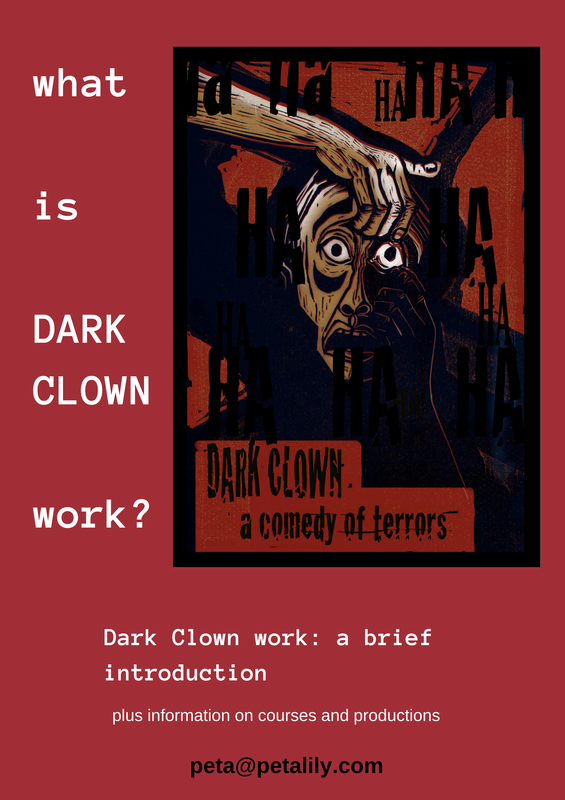Many years ago, I was driving somewhere and feeling rushed. I was ahead of myself, wanting to get through the task I had been burdened with (in the days before I learned how to say no), so as to get back to things I really needed to do. I ran into a bollard. A powerful reminder of how mind and body work together and how being in synch with yourself and fully being in the present moment is optimal.
Every day I find fresh evidence that grounding in the body, breathing in the body, sensing in the body and using receptive seeing is key to clown work, and to all of theatre and performance work.
‘When you look, remember to see.’
One of my key teaching phrases for Clown (intended to be playful and memorable via it’s seeming tautology) is: ‘when you look, remember to see.’ This instruction (guidance) helps the clown player remain in the present moment, and to stay open to connection. If you look and see an audience are momentarily unenchanted, it is highly important to avoid ignoring it and to rush forward, hoping to achieve something in the future or (more likely) to escape the emotion that started to rise.
If there’s been a failure* – even for a micro-beat, if you gloss over or avoid it, you are missing a connection beat. This is the clown’s job – to connect, to create community with and, ideally, within its audience.**
Once a clown teacher sets an exercise, they keenly look for the moment when the trainee clown is guarded, thinking ahead, or when they have suppressed an impulse – the pedagogical step then is to use the friendly coach voice or the ‘grumpy clown professor’ voice to guide or provoke the trainee clown into the moment, into their body, into their relation with the audience or into their relation to their scene partner (or all of the above).
I use the wonderful ‘casting the net’ exercise I learned from Alison Skilbeck. The first application is casting the net over your audience – but once learned, you can cast the net over yourself. The ‘net’ is a very efficient metaphor for where one’s attention is placed. When setting up clown pair work, I often say: Get with yourself, get with your ‘friend’ (playing partner), get with the audience (no specific order for the last two – obey the impulse / happenstance of the moment).
Fay Simpson talks of the importance of being willing to encounter one’s own no-go areas (the emotions that choke us or prickle our skin or tense our shoulders or grip our guts). She advocates for exploring them (and offers a coherent methodology to do that in her book The Lucid Body). Whatever is suppressed takes effort, causes tension, blocks flow and diminishes presence. The more one has had the courage and humility to experience/ transform/integrate all they humanly are, the more they are ready to ‘portray the glory as well as the horror of life’, and the more they can bring to a scene with a co-player (and they can bring it more safely, without bringing in any tension caused by suppression) … and also, the more they can offer the audience.
‘When you do, remember to be.’
A few years ago, impulse brought me another teaching phrase: ‘when you do, remember to be.’
I opened Viola Spolin’s book ‘Theatre Games for the Lone Actor’. When I read, on page 18: ‘Feel your skull with your skull!’ I entered an altered state. Sensing the body is an act of dedicating your awareness. It’s an act of imagination and an act of faith (‘but I can’t feel my skull!’) as well as a sensory practice. It’s an investment. An actor with dyspraxia recently shared that at the beginning of their journey of actor training, they had not believed that ‘feeling their body’ was possible, but through practice, they came to appreciate the abundant gifts that investment brought to them as a performer and as a person.
You are doing the exercise - but are you doing it in your head and are you forgetting the body? Are you able to lower your centre of gravity (even when playing high excitement)? Are you viewing the world in a blur, or can you still see your scene partner and sense or see the audience? Are you in panic or over-excitable mode and unable to even notice that your breath is shallow and unresourced and that you need to ground and feel?
Opening up the no-go areas
Dina Glouberman offers a metholodogy for people to get present to blockages by inviting in a metaphor. The metaphor enables a psycho-physical state to become viewable, open to dialogue and it is truly amazing how you can gain perspective and transform it. Dina always encourages the new image to be danced – so that new state is now worked through the body and its energies.
Arnold Mindell has a process for working with a symptom. You identify a pain or niggle and allow it to choreograph you – you can discover it as a character or maybe a landscape or a song – as you shift through modalities, the symptom is allowed expression; you can get present to it, rather than ignoring, suppressing, sedating, resisting it. When I do this exercise in class most people report at least 50% reduction of the pain or discomfort.
Back when I was practicing Five Rhythms, I was, on many occasions, able to transform physical discomforts and unresourceful mental states during a 3 hour class.
Warm up
For both theatre and clown, warming up is key. I am currently teaching an evening class. I set an exercise close to the start of class, aiming to build on ground gained the previous week. A class participant reported: ‘it’s hard to come in from the outer world and gain the open state’, so we switched to exercises and processes to re-gain and re-install the open state. My warmups (using the wisdom of many beautiful teachers I’ve been privileged to work with) are full of invitations to sense the body: ‘feel your feel on the floor’; ‘taste the moment’; ‘be on the hara’. I use Avner the Eccentric’s instruction - ‘put the weight on the undersides of the body’ (to which I add ‘include the interior of the body - the undersides of your heart, eyeballs, brain’).
When the attention is on the body, the brain is less busy, more open and resourceful. When the attention is on (or with) sensation, the body gains in flexibility.
I also use an exercise learned on my Sedona Method training of opening up the heart, then the head, then the gravitas zone. It’s a great way to help people access the undefended self in preparation for clown work. Fay Simpson quotes one of her teachers: ‘the more (you) reveal (your)self, the more the audience will be revealed.’
Be-ing while doing
In clown work embodiment is key because we are interested in impulses over ideas, and a body that is warm and inhabited and paid-attention-to, is more conducive to heeding and following up on impulses. Impulses are the moments when unexpected magic can happen – and when impulses are ‘swallowed’ everyone in the room feels it. Becoming able to work with impulses brings freshness and energy to your clown and/or your acting self, it allows everyone to experience the instinctual, our humanity, and it generates what Monika Pagneaux calls ‘life-fullness’.
Once you have been able to achieve a good level of embodiment, to tune into your own psycho-physical self, it should be able to support you while being in relation to your co-players and your audience, and, if you are a clown or improvisor, your imagination.
There’s a further step to the story. For a professional clown, like Slava Polunin, doing the same act with set beats every night, they create the spirit of freshness, they have the experience and skill to generate (or re-create) the spark or surge of an impulse at will, and the result for the audience is a feeling of the ineffable, of something transporting or even sublime.
Early Clown work is a lot of fun but people often ask – how do I develop timing? How can I be in clown state and improvising and be in connection with the audience? Deepening the practice of embodiment means growing your awareness multidimensionally: the awareness of the interior of your body, of the state of the audience and of the space/potential between you and your co-players and the audience. I use Declan Donnellan’s wonderful exercise ‘There’s you, there’s me and there’s the space in between.’, co-opting it for clown work as: ‘There’s you, there’s me and there’s a world of possibility in between.’ And, further, ‘There’s you there’s me and there’s them! (the audience) - and there’s worlds of possibility in between.’
When you are in action onstage (or in the rehearsal room) are you with your breath, are you awake to impulses? Are you able to respond to your scene partner? If clowning - how much can you interest yourself in your audience?
Breath, body, and process.
NOTES:
* About that micro-beat of failure: when something non-optimal happens, allow that to register with you and share yourself with your audience. If you are not intent on closing down and rushing away from that moment, then your body will be available to react. Something non-optimal happens – and if your body is open and responsive and connected and undefended, something will be visible - there will be an expression, possibly even a micro-expression of eyebrow, skin surface tension, a change in your breath – if you take the micro-second of time or the metaphorical ‘space’ to allow this response to happen, the audience can see it and feel connected to you. The audience loves to see the clown fail. Don’t deprive them of your undefended self. This is the clown’s job - to show the ’sad normals’ their humanity. (Sad Normals is a playful phrase I use when teaching clowning. ‘It’s the clown’s job to show all the thought processes, failures and feelings the Sad Normals (i.e. me in the supermarket) would prefer to suppress and hide.’)
**A wonderful example of this was Jamie Wood's show about tennis champion Bjorn Borg 'Beating McEnroe'. Wordlessly and gently, he threw tennis balls into the audience and we had to work as a community to deliver them back onstage. His gentle demeanour communicated to us and we emulated it, helping each other find the fallen balls and admiring each other's throws.
What is embodiment?
My movement colleagues use ‘embodiment’ regularly now to mean a performer (or student performer) awake to and inhabiting their physical presence.
Some definitions:
oxfordselearnerdictionary.com says:
embodiment /ɪmˈbɑdimənt/
[usually singular] embodiment of something (formal)
a person or thing that represents or is a typical example of an idea or a quality synonym epitome He is the embodiment of the young successful businessman.
Miriam Webster says:
1 : to give a body to (a spirit) : incarnate. 2a : to deprive of spirituality. b : to make concrete and perceptible. 3 : to cause to become a body or part of a body : incorporate. 4 : to represent in human or animal form : personify men who greatly embodied the idealism of American life— A. M. Schlesinger born 1917.
This paper expresses it nicely:
‘Embodiment or incarnation is defined as the giving of human form to a spirit – to make manifest or comprehensible an idea or concept, through a physical presentation. In the biblical definition, incarnation is the manifestation of the holy spirit in human form. Similarly, in performance, the body is the canvas or the medium for expressing and bringing to life a concept, emotion, story or idea, before an audience.’
'Embodiment in physical theatre practices and actor training methods refers to the eradication of a perceived separation between mind and body, allowing for a “pure” communication between dramatic impulses and bodily expression on stage.'
https://www.researchcatalogue.net/view/299025/498832
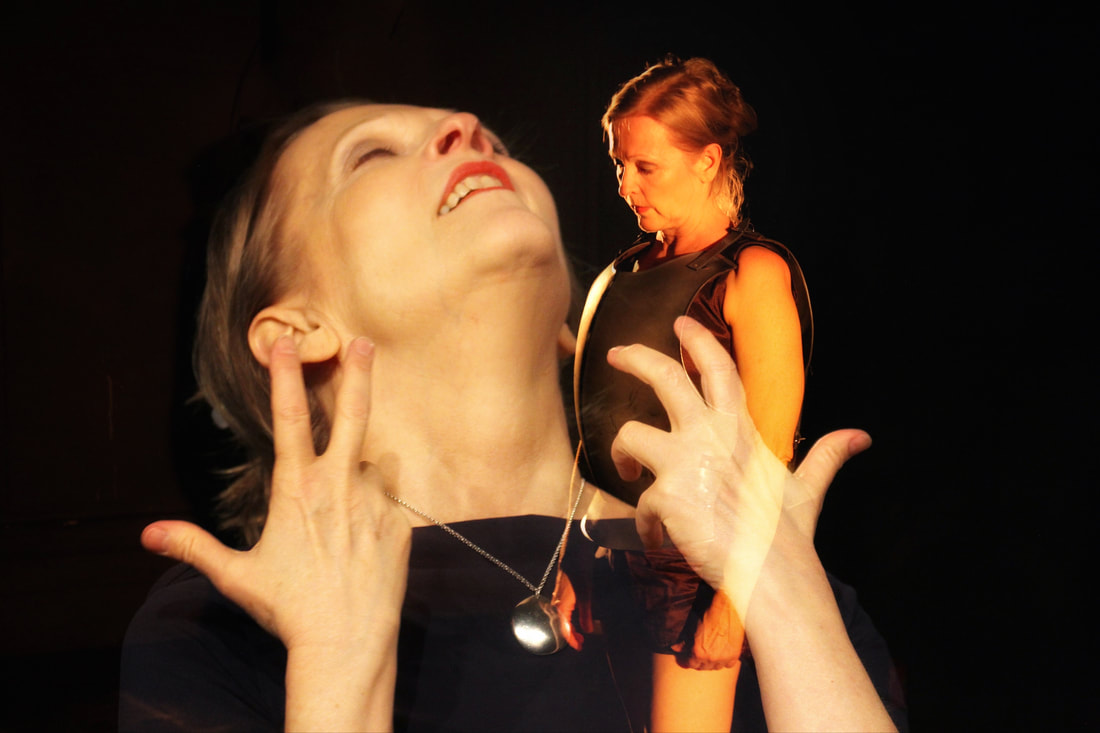
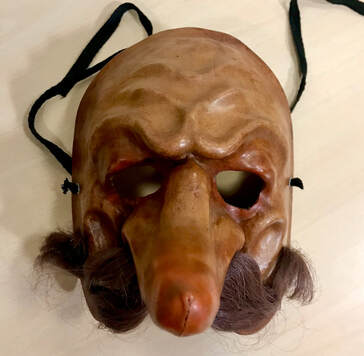
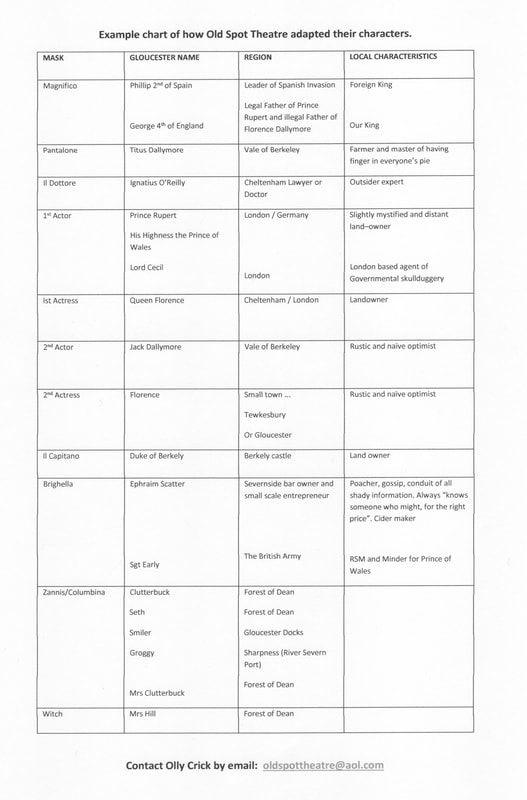
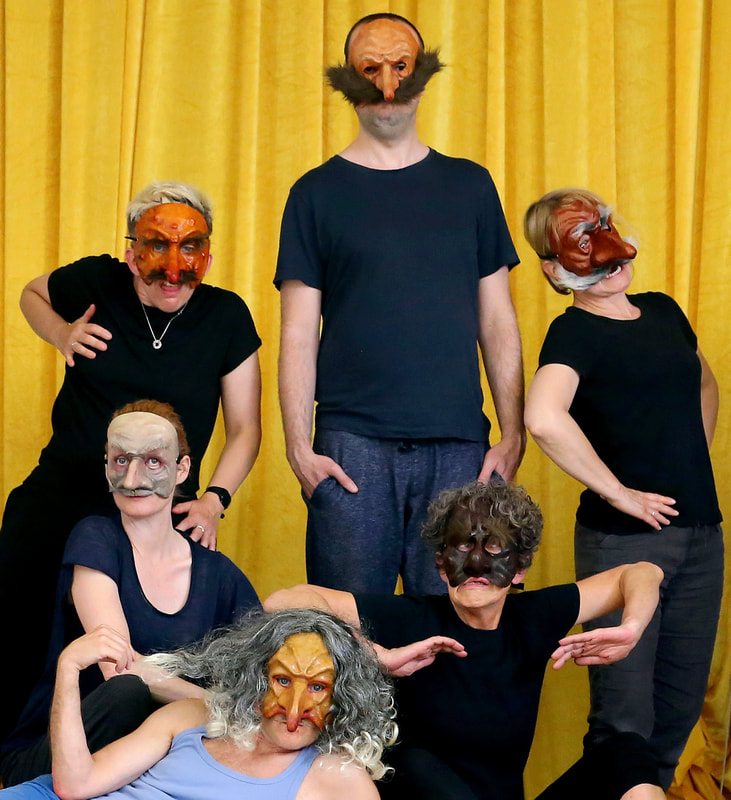
 RSS Feed
RSS Feed
